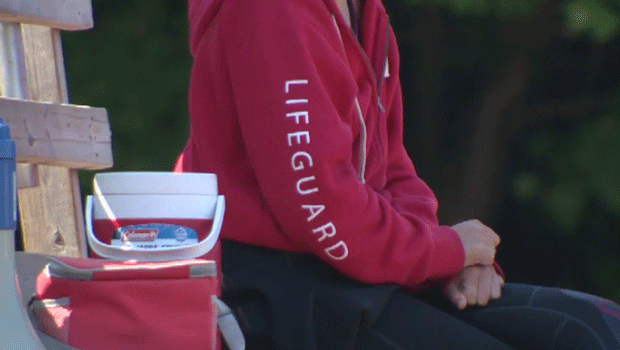'Put a crimp in training': Manitoba dealing with shortage of lifeguards due to pandemic

The consequences of the COVID-19pandemic continue to be felt as the province and country try to get back to normal. The latest complication is related to lifeguards.
Dr. Christopher Love, the water smart and safety management coordinator for Lifesaving Society Manitoba, said there is a shortage of lifeguards throughout North America.
“The effects of the pandemic with swimming pools and waterfronts shut down because of health restrictions during that time, really put a crimp in training taking place and a lot of people that were in the industry, they left for other jobs,” said Love.
On top of the pandemic setbacks, Love said the typical age group for lifeguards – 16 to 23-year-olds – are not pursuing these “classic rite of summer jobs” as they are becoming busier with other activities and have their lives scheduled year-round.
With a lifeguard shortage, Love said the impacts vary depending on the facility, but it can lead to reduced time slots for people to enjoy the pools.
“Then it means people go to less safe places to swim. Instead of going to a lifeguarded waterfront or the lifeguarded swimming pool, they are going to the unlifeguarded waterfront or swimming pool or whatever it is. Those can be more dangerous. They are not supervised, they haven’t been checked for safety by a professional and there’s more likelihood that where we are going to see incidents where people are going to get injured or unfortunately die.”
Love said for people who might be looking at becoming a lifeguard or want to get back into the industry, it’s the perfect time to be a jobseeker because if they have the qualifications, it should be easy to be hired.
“In Manitoba, you need to be 16 to become a lifeguard. So you can start taking the courses now in order to feed into that and then when you are the appropriate age, be able to step out onto the pool deck,” said Love. “It’s not just a young person’s game. This is something where people who are older and may have been lifeguards previously, if they’re willing and interested in coming back, there are opportunities out there.”
To be qualified, Love said people will also need their national lifeguard certification, standard first aid and CPR C certificate. He added for those who already know how to swim and are looking to become a lifeguard, it will take around 120 hours to complete all of the steps needed.
For more information on training and qualifications, people can visit the Lifesaving Society’s website.
CTVNews.ca Top Stories

NEW For their protection, immigrants critical of China and India call for speedy passage of Canada's foreign interference legislation
Canadian immigrants threatened by hostile regimes are urging parliamentarians to quickly pass the 'Countering Foreign Interference Act' so they can feel safe living in their adopted home.
OPINION No reunion between Prince Harry and the King signifies a setback for royal unity
Prince Harry, the Duke of Sussex, has made headlines with his recent arrival in the U.K., this time to celebrate all things Invictus. But upon the prince landing in the U.K., we have already had confirmation that King Charles III won't have time to see his youngest son during his brief visit.
Montreal Canadiens to get fifth overall pick in NHL draft
The Montreal Canadiens retained the fifth pick in the upcoming NHL lottery draft on Tuesday night.
Indian envoy warns of 'big red line,' days after charges laid in Nijjar case
India's envoy to Canada insists relations between the two countries are positive overall, despite what he describes as 'a lot of noise.'
Stormy Daniels describes meeting Trump during occasionally graphic testimony in hush money trial
With Donald Trump sitting just feet away, Stormy Daniels testified Tuesday at the former president's hush money trial about a sexual encounter the porn actor says they had in 2006 that resulted in her being paid to keep silent during the presidential race 10 years later.
U.S. paused bomb shipment to Israel to signal concerns over Rafah invasion, official says
The U.S. paused a shipment of bombs to Israel last week over concerns that Israel was approaching a decision on launching a full-scale assault on the southern Gaza city of Rafah against the wishes of the U.S.
Former homicide detective explains how police will investigate shooting outside Drake's Bridle Path mansion
Footage from dozens of security cameras in the area of Drake’s Bridle Path mansion could be the key to identifying the suspect responsible for shooting and seriously injuring a security guard outside the rapper’s sprawling home early Tuesday morning, a former Toronto homicide detective says.
Northern Ont. woman makes 'eggstraordinary' find
A chicken farmer near Mattawa made an 'eggstraordinary' find Friday morning when she discovered one of her hens laid an egg close to three times the size of an average large chicken egg.
Susan Buckner, who played spirited cheerleader Patty Simcox in 'Grease,' dead at 72
Susan Buckner, best known for playing peppy Rydell High School cheerleader Patty Simcox in the 1978 classic movie musical 'Grease,' has died. She was 72.

































